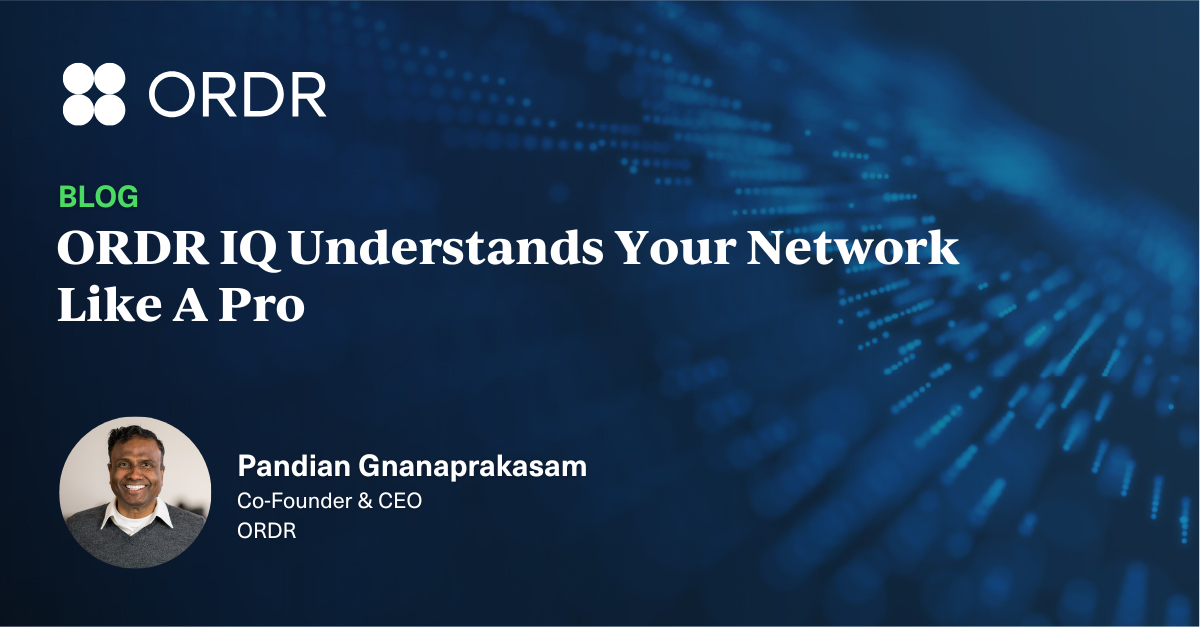The Numbers Game
Today, virtually every device connects to the enterprise network. From simple function IoT devices to multi-million-dollar operational systems, modern devices utilize data connectivity to perform highly specialized tasks much more intelligently. The sheer heterogeneity of these devices is growing exponentially.
Effectively regulating these devices, in terms of what it can and cannot do inside the enterprise, requires a significant amount of knowledge on each, since you simply cannot control what you don’t know. In an effort to build the necessary repositories of device intelligence, vendors create – with varying levels of detail – device profile libraries. At Ordr we see these libraries as a starting point, a base on which to deliver a comprehensive suite of control capabilities that effectively protect devices and relevant business critical information. We believe that developing a large profile library is nice – organizing in a way to keep it relevant and up to date is crucial.
There are enormous challenges in organizing the library relevant and up to date. A set of printers that are classified as a set of profiles in an enterprise installation will look slightly different in another customer installation – perhaps because of configuration, operational behavior, network connectivity – and will result in an entirely new set of device profiles. Any firmware or software update will necessitate a new profile in order to keep it up to date. At the same time, just like a traditional library, there are too much material that are irrelevant since nobody can ever use them. Profiles with irrelevant information will do more harm than good. To search through all the myriad of uncorrelated and out of date information in a library to get what you need is a difficult task.
Profile Library vs Profile Generator
At Ordr, we believe that the only way to keep the device profiles relevant and up to date is to develop a profile generator. Being able to report millions of device profiles in a library is fundamentally unimportant. What is important is the efficiency with which the profiles can be used in an underlying multi-vendor networking and security infrastructure – and automate such infrastructure to control these devices in terms of access control and policy enforcement. We need a real-time Profile Generator for those devices actually deployed in an enterprise and produces the relevant parameters for automated control.
In order to achieve this goal, we deploy a number of sophisticated Machine Learning (ML) techniques for our Profile Generator. Our Deep Neural Network (DNN)model ingests all the relevant attributes identified to create a sophisticated machine learning engine for comprehensive device classification. Each unique set of device attributes are collected and fed into the engine, which learns and organizes it. When new devices are added to the network or when their software is updated, the learning engine can add or update the device profile. Moreover, it has the intelligence to determine that multiple devices, while they may have slight differences in individual attributes, are essentially the same type and class of device. It filters out irrelevant details and focus on important attributes.
Instead of creating a new profile for each of these devices and each variant of it, the DNN enhances the main device profile to better predict the behavior of the device regardless of its enterprise-specific attributes. When we feed a set of attributes of a device, DNN engine models the non-linear relationship on data for more generalized learning. This way we arrive at an “inference engine” that can predict the classification the devices of that it has never seen before.
Along with DNN, we also use carefully crafted ensembles of Random Forest and SVM algorithms to influence prediction performance. Such techniques have a significant positive impact on the classification accuracy of our inference engine.
For instance, with Ordr, a printer profile hierarchy would be organized as a logical tree beginning for example with manufacturer, make, model, firmware, and other attributes which may vary from enterprise to enterprise. Ordr intentionally organizes this structure in a way that enables increasing granularity of detail with each tier, while other approaches would create a different profile for each variation in any level of attribute. Not only is it an efficient way to store the profiles, the hierarchical method delivers an ever-increasing level of intelligence and accuracy, while maintaining the relationship among the devices in an efficient manner. As the number of devices identified to be within a group increases, the predictive engine becomes increasingly efficient in future classifications, all without the need for any manual intervention or personnel resources. The Profile Generator is a Learning Tree that continues to produce new branches and grow new leaves, while shedding dead branches and dropping dry leaves.
Our ultimate goal is to effectively offer automated protection to the myriad of connected devices that access the enterprise network. To do this, we generate and enforce granular policies that utilize the existing network and security infrastructure. It is absolutely essential to scale profiling efficiency to many hundreds of thousands of devices in a single enterprise, and finish this process within hours. Without understanding the relevant details of the relationship among these profiles properly organized in a hierarchical way – this policy generation would be untenable, if not impossible.
Taking Control with Actionable Profiles
In summary, we use the most sophisticated data extraction techniques to collect data using methods like DPI (Deep Packet Inspection) and application level transaction analysis. The inference engine from the learning model gives us an enormous advantage to classify the unseen devices in the customer setup without additional interventions. Our AI/ML models make it possible to not only detect anomalies but also come up with actionable auto-generated policies ready to apply in the existing networking and security infrastructure. Our real-time Profile Generator can keep the information relevant and up to date, with continuous improvement in coverage and accuracy.
It may sound impressive and exciting to hear about many millions of device profiles. Big numbers get attention. But growing a tree is more than collecting thousands of leaves.

Interested in
Learning More?
Subscribe today to stay informed and get
regular updates from ORDR Cloud



